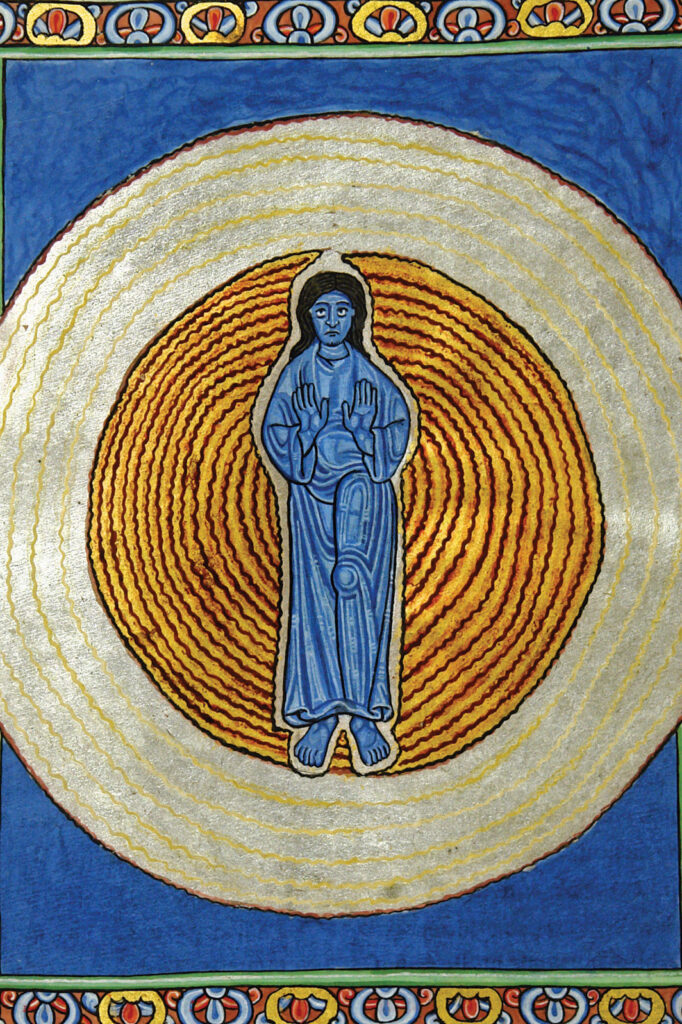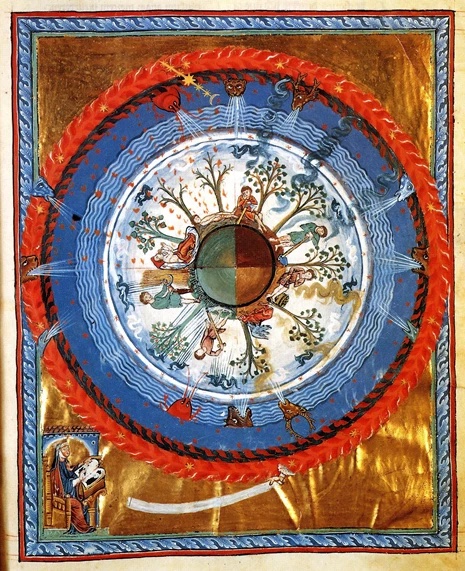Recently I taught a an online workshop with Atrium Health Foundation called “Improvising with Hildegard von Bingen.” The music is in conjunction with my forthcoming book by Mel Bay Publications, “Songs of Hildegard von Bingen for Harp.” Atrium Health host Kathleen Blackwell-Plank has been curating a valuable workshop series for therapeutic musicians for the past few years. I was asked to teach the class rather last minute as a substitute and was so glad to have participated. After a show of hands, I realized that even in the musical community only half of people know who Hildegard von Bingen is.
So… Who was Hildegard von Bingen?

Hildegard von Bingen (1098-1179) was born in Germany during the Middle Ages, at a time when education and literacy were controlled by the Catholic Church. The tenth child in her family, Hildegard was “given” as a tithing to the church, not an uncommon practice of the time. When she was 14, she was sent to live a life of religious devotion in Disibodenberg. At the convent, she prayed, wrote, and only had access to the outside world through the view of a single window.
When her main caretaker, Jutta, died in 1136, Hildegard was appointed prioress of the abbey. It was during that time that she began writing music. Despite her claim of lacking formal training in either the Latin language or music, Hildegard produced songs that were equal to those written by the most admired men of the Middle Ages. A woman of letters, she often communicated directly with clergy of the church, including Pope Eugene III, who encouraged her to continue writing music and poetry. She went on to write several books about religion, art, politics, philosophy, science, medicine, and herbs.
Hildegard had visions that she called “reflections of the living light,” and she painted what she saw. She suffered from headaches and some scholars of her writing suspect that she may have She had many visitors at the abbey who claimed that she was able to heal them though touch and with her knowledge of herbal medicine. In time, she had so many visitors, that a larger venue was needed. The church relocated her to an abbey of her own, in Bingen, where she was able to attend to more people. She died there at the age of 81.
What did her music sound like?
Monophonic (single line melody), choral, sung in Latin, modal (most often in Dorian, Phrygian, and Mixolydian modes), natural minor keys, Gregorian Chant
How does this music translate to the harp?
Beautifully! Hildegard’s music is often in modes and have minimal lever changes.

Another element of these songs recognizes their inherent therapeutic nature of sound and beauty. In keeping in line with this sentiment, I can tell that these songs work best in their simplest forms. I didn’t seek to make the arrangements overly complex. Often, harpists at the bedside will have a small harp, or a folk harp. I wanted to make this music accessible for as many people as possible, so that if the goal was to play for people with physical, mental, or sleep ailments, they could do that with the harp size available to them.
Some songs I thought could become more complex, so I wrote a second arrangement. You will see this in the forthcoming book, Songs of Hildegard von Bingen for Harp, with five songs. In those second arrangements, there exists low bass notes (for the large harp), sophisticated chords that one didn’t hear in the Middle Ages, or space for improvisation and looping of chord progressions.
How to play songs of Hildegard von Bingen
Please stay tuned for announcements of the books release, “Songs of Hildegard von Bingen!” You can sign up for my newsletter and follow me on YouTube for new releases the Hildegard von Bingen songs.